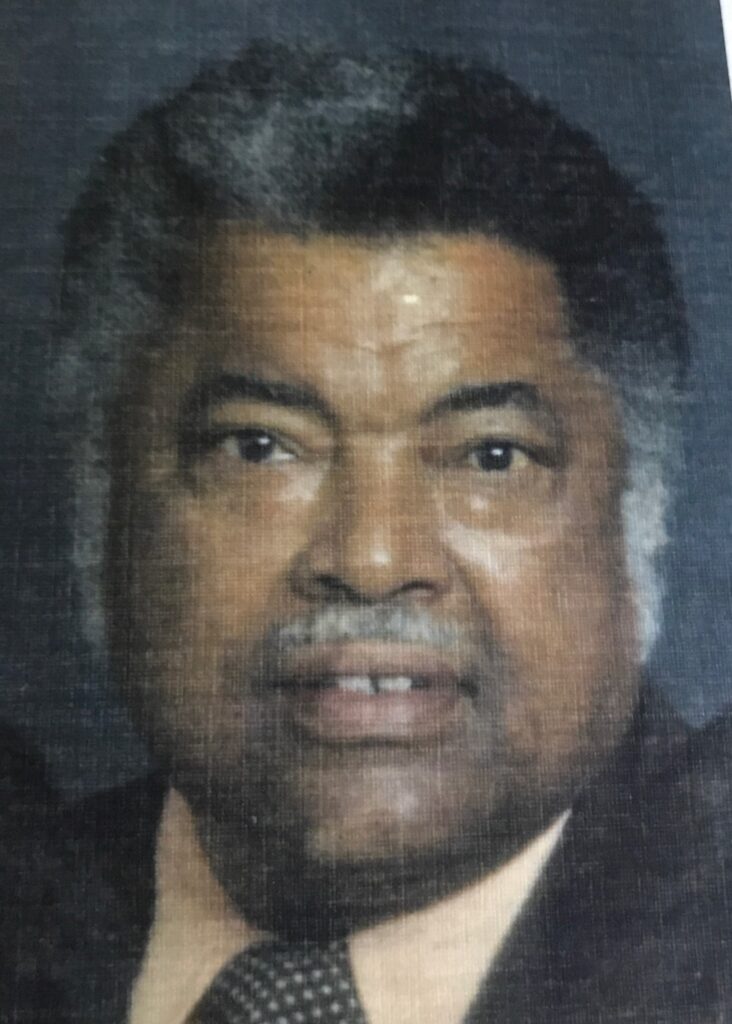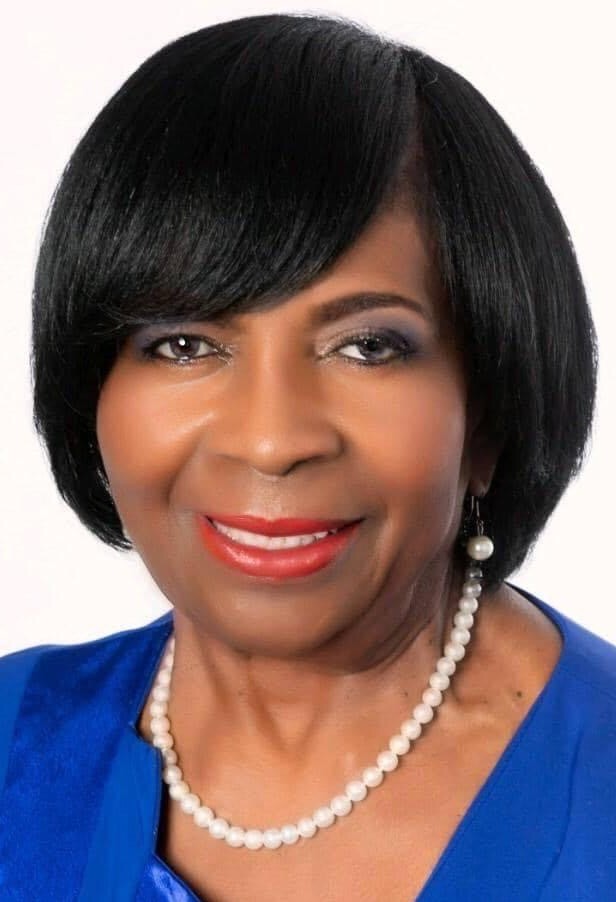Amos Lewis ‘considered everyone an artist’

Amos Lawrence Lewis Sr. 
Maggie B. Lewis-Butler
By Amanda Sieradzki
Council on Culture & Arts
The late Amos Lawrence Lewis Sr. worked deftly with his hands — hyper-focused and detail oriented no matter the medium with which he chose to express himself.
He was an artist who loved capturing the eye with bright, bold colors. In a series of collages he created, he rendered a self-portrait square by square with yellows, blues, blacks, and browns.
Working from photographs of his children and wife, Maggie B. Lewis Butler, he captured their likeness with precision and care. Lewis-Butler, a retired teacher, Leon County School Board member, and widow of Lewis, fondly recalls her late husband asking her to sit still for one of his sculptures.
While Lewis passed away in 1995, Lewis-Butler said his fervent commitment to his students and his legacy in art education lives on.
“He thought it was important to expose Black students to art education,” said Lewis-Butler, who remembers Lewis giving her a pair of hand-crafted animal earrings to wear to her science class. “He was able to teach history, science, and math as a part of art education. He believed everyone had the ability to create art, and that everyone could be an artist. Through art education, you could discover your passions.”
‘Indelible Marks’ at City Hall
The “Indelible Marks” exhibition was featured at the City Hall Art Gallery through this past Monday. It celebrated Lewis’ ceramics, painting, printmaking, collage, and mixed media sculptural works alongside another pillar of the art and education community, educator and artist Leon “Uncle Junior” Hicks.
Works that were featured in the exhibit can also be seen virtually in COCA’s online gallery at cocaonlinegallery.zenfolio.com.
While Lewis taught in the Florida A&M University art department before teaching art at FAMU’s Developmental Research School for 25 years, Hicks’ teaching career also began at FAMU.
For five decades, the master engraver taught at Concord University, Lincoln University, Lehigh University, and 25 years at Webster University where a scholarship was created in his name, and Hicks continues to teach and mentor emerging artists in Tallahassee at the age 89.
Venvi Art Gallery owner and director Brinda Pamulapati witnessed Hicks’ passion for teaching firsthand when she took her son to his engraving class at Railroad Square just prior to the COVID-19 pandemic lockdown. Hicks created a personal engraving kit for each student, and filled it with the tools they needed to learn several beginning techniques, as well as copper plates for practice etchings.
“His work is evergreen and he is passionate about teaching,” said Pamulapati. “He’s been very innovative and forward thinking. It will take the art world a long time to catch up with him.”
Hicks’ work has been exhibited and collected nationally and internationally. He earned a bachelors’ degree in painting/sculpting from Kansas State University, and a master’s degree in painting and an MFA in printmaking at the University of Iowa. He has also studied art history at Stanford University, La Romita School of Art in Italy, and Atlanta University.
Embedded within Hicks’ engravings are his life and upbringing in the South. In his piece titled, “Thomasville Georgia, The Big Oak” etched branches reach skyward in a cloud of delicate markings. Hicks’ “My Hometown” and “Virtualscapes” in City Hall’s art gallery are surrealist juxtapositions of lines and architecture that challenge the eye to understand perspective and gravity in new ways.
Both Hicks and Lewis share this sensibility when it comes to stunning detail, as well as the importance of capturing the imagination for not just the viewer, but also their students.
Lewis ‘considered everyone an artist’ Lewis’ daughter, Sha Lewis Gadson can remember her father’s studio being an explosion of materials and works. She never knew boredom as her home was always rotating new, original artwork on the walls.
She remembers her father being a stickler for the height a work should be hung —always at eye level for the viewer so they never had to strain to look. Even the family’s van sported an original painted tire cover with the FAMU rattler at the center. One of Gadson’s favorite memories of her father was creating a kite with him for a local contest.
“I never considered myself an artist, but he considered everyone an artist,” said Gadson. “He believed we have art in us, and art education was a way to get students interested in learning, period. Through art education you could learn various skills like commitment, collaboration, and teamwork.”
Hunger for knowledge
Gadson said her father would have students work on several team projects throughout the school year to learn how to overcome challenges and conflicts. Lewis earned a bachelor’s degree from FAMU and a master’s degree in art education from FSU. He was a celebrated art educator, recognized with many awards including several from the NAACP on local, state, and national levels.
One of his former students, Leon County Commissioner Bill Proctor, spoke at one of his art shows remarking on how the late Lewis was able to instill in him a strong sense of discipline through art.
A culinary whiz as well as an educator, Lewis enjoyed crafting dazzling hors d’oeuvres in much the same way that he approached paint on a canvas. His piece, “Hunger” features three African-Americans holding a bowl together. Both Lewis-Butler and Gadson describe the artwork as being representative of Lewis’ most indelible philosophy
“It was symbolic of being hungry for knowledge,” said Gadson. “It was a representation of not just hunger for food, but food also as knowledge. My father believed that through education you had choices. As a Black person, it was important for us to be hungry for it all.”
Amanda Sieradzki is the feature writer for the Council on Culture & Arts. COCA is the capital area’s umbrella agency for arts and culture (www.tallahasseearts.org).







